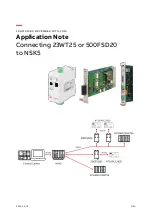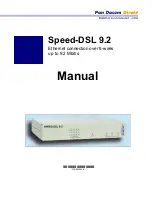
Safety, Compliance, and Certifications
© 2014 Edgewater Networks. All Rights Reserved.
21
pipe system, if present, are connected together. This precaution may be
particularly important in rural areas.
Caution
Caution
Caution
Users should not attempt to make such connections themselves, but should
contact the appropriate electric inspection authority, or electrician, as
appropriate.
NOTICE:
The Ringer Equivalence Number (REN) assigned to each relevant
terminal device provides an indication of the maximum number of
terminals allowed to be connected to a telephone interface. The
termination on an interface may consist of any combination of devices
subject only to the requirement that the sum of the RENs of all the devices
does not exceed 5.
The REN of this equipment is either marked on the unit or included in the
new style USA FCC registration number. In the case that the REN is
included in the FCC number, the user should use the following key to
determine the value:
The FCC number is formatted as US:AAAEQ#TXXX.
# is the Ringer Equivalence Number without a decimal point (e.g. REN of
1.0 will be shown as 10, REN of 0.3 will be shown as 03). In the case of a Z
ringer, ZZ shall appear. In the case of approved equipment without a
network interface or equipment not to be connected to circuits with analog
ringing supplied, NA shall appear.
The REN is useful to determine the quantity of devices that may be
connected to the telephone line. Excessive RENs on the telephone line may
result in the devices not ringing in response to an incoming call. In most,
but not all areas, the sum of RENs of all devices that may be connected to
a line, is determined by the total RENs, contact the local telephone
company.
Canadian Certification Requirements for Bilingual Safety,
Warning and Caution Markings
Canadian Federal and Provincial/Territorial statutes and regulations, such
as the Consumer Packaging and Labeling Regulation, require the use of
bilingual product markings for products sold in Canada and in the province
of Quebec, additionally regulated under “The Charter of the French
Language.” The bilingual requirements include the safety, warning and
caution markings as defined by the Standard or ORD.
The UL Procedure contains the English language markings. It is the sole
responsibility of the Applicant and Manufacturer to comply with the








































